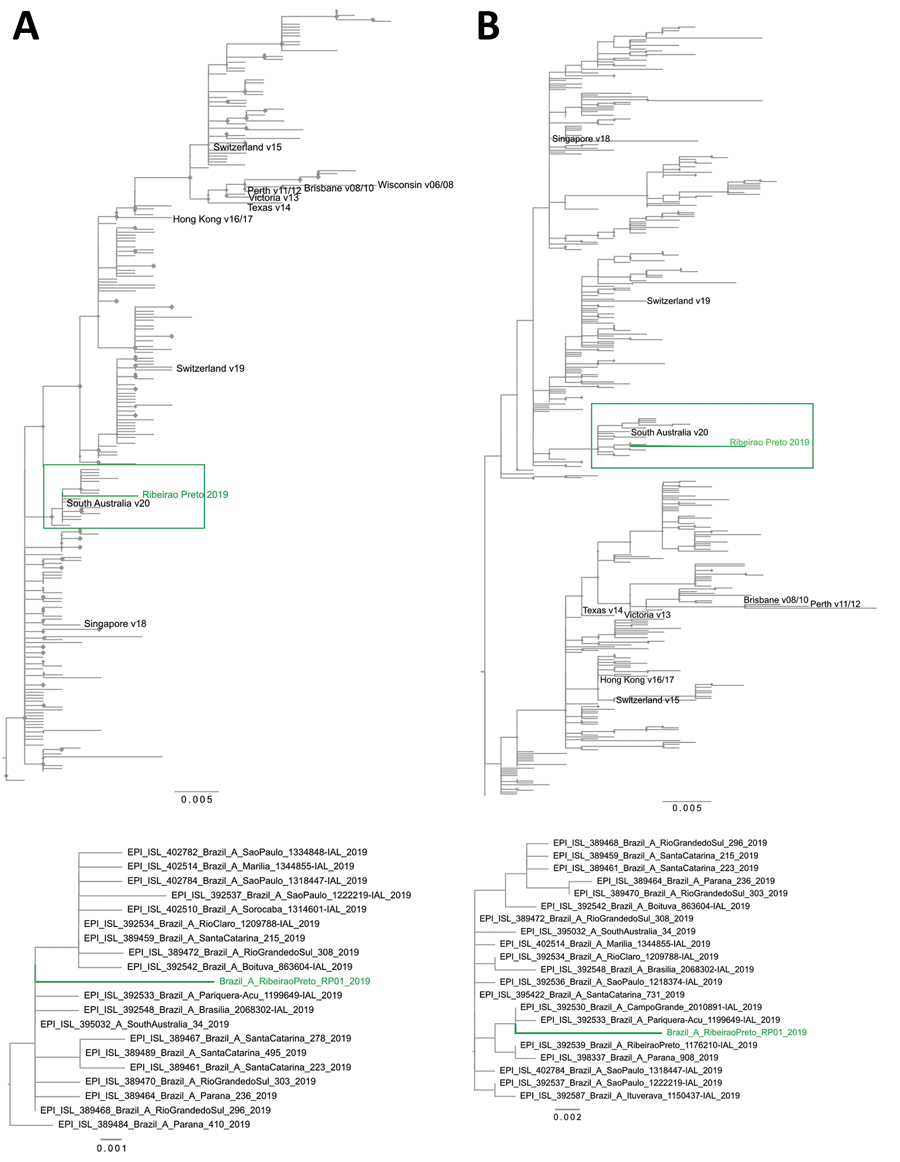Volume 26, Number 7—July 2020
Research Letter
Detection of Influenza A(H3N2) Virus RNA in Donated Blood
Figure

Figure. Maximum-likelihood phylogenetic tree of hemagglutinin (A) and neuraminidase (B) of influenza A(H3N2) virus detected in blood donation, Brazil. A total of 264 hemagglutinin and 419 neuraminidase sequences from seasonal strains circulating during 2011–2019 and available in GISAID (https://www.gisaid.org) were used to estimate the phylogenetic relationships with the influenza A virus detected in Ribeirao Preto, Brazil. Green indicates the H3N2 strain obtained from blood donor from Ribeirao Preto; diamonds at each node indicate statistical support along branches defined as ultrafast bootstrapping >90% (of 10,000 replicates). The cluster where the donor strain obtained from Ribeirao Preto is located is shown in detail at bottom. Scale bars indicate nucleotide substitutions per site.